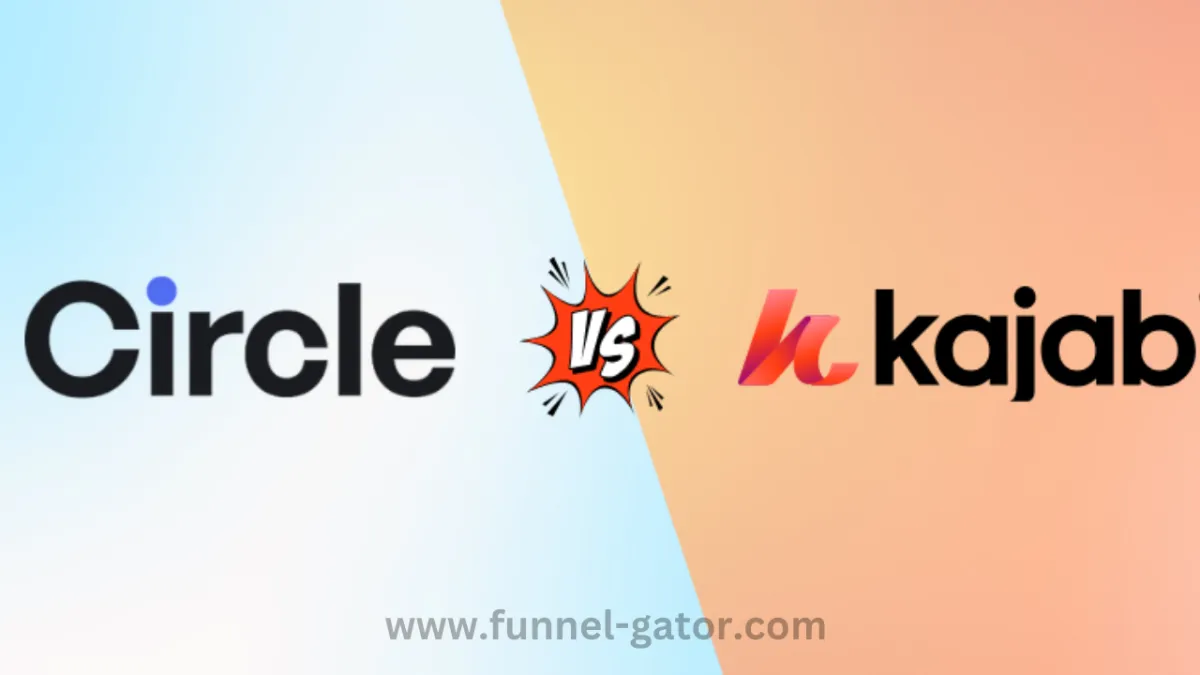
Circle vs Kajabi: Which All-in-One Platform Is Right for You?
If you’re a course creator, coach, or community builder looking to launch your digital business, you’ve probably come across Circle and Kajabi. Both platforms offer robust tools to help you sell content, manage communities, and grow your audience — but which one is truly right for you?
Let’s dive deep into the world of Circle vs Kajabi, breaking things down in plain English, and helping you make a confident decision.
🧩 What Are Circle and Kajabi?
Before we compare them, let’s understand what each platform is all about.
💬 What is Circle?
Circle is primarily a community platform built for creators who want to build engaging, interactive spaces for their audiences. Think of it as a modern-day forum meets social media meets membership site.
It’s best known for:
Interactive communities
Live events and video rooms
Member directories
Course hosting capabilities
Custom spaces and branding
It integrates well with tools like Zapier, Slack, and ConvertKit, making it a flexible choice.
🎓 What is Kajabi?
Kajabi is an all-in-one platform for entrepreneurs who want to sell online courses, create sales funnels, manage email marketing, and more — all under one roof.
Kajabi is famous for:
Powerful course creation tools
Landing pages and funnels
Email campaigns
Membership sites
Websites and blogs
It's the kind of tool that helps creators “do it all” without hiring a tech team.
🤼 Circle vs Kajabi: Feature-by-Feature Comparison
Let’s go head-to-head in the most important areas for creators.
1. 🧑🤝🧑 Community Building
Circle: This is Circle’s bread and butter. You can create spaces, discussions, polls, and even host live video calls inside your community. It’s like having a private social network.
Kajabi: Offers a basic community feature but lacks the depth and interactivity of Circle.
👉 If community is your top priority, Circle wins hands-down.
2. 📚 Course Creation
Kajabi: This is where Kajabi shines. With its intuitive drag-and-drop builder, you can organize online courses, quizzes, drip content, and track user progress.
Circle: Has course hosting, but it’s more lightweight and best suited for smaller programs or cohort-based learning.
👉 For structured online course platforms, Kajabi is your go-to.
3. 💰 Monetization & Sales Funnels
Kajabi: Complete with sales funnels, checkout pages, and email automations, you can create an entire marketing engine.
Circle: Supports memberships and Stripe payments, but you’ll need third-party tools to build funnels or nurture leads.
👉 If you're serious about sales automation, Kajabi takes the lead.
4. 📩 Email Marketing
Kajabi: Built-in email marketing with automations, segmentation, and beautiful templates.
Circle: No native email features. You’ll need to integrate with tools like ConvertKit or Mailchimp.
👉 For integrated email marketing, Kajabi wins again.
5. 🎨 Design and Customization
Circle: Lets you customize the look and feel of your community spaces and embeds seamlessly on your site.
Kajabi: Offers full website-building tools with themes, templates, and advanced customization.
👉 For a full branded website experience, Kajabi wins, but for community-focused design, Circle is more intuitive.
6. 🔌 Integrations
Circle: Plays well with others. Use Zapier to connect to hundreds of apps.
Kajabi: Fewer native integrations but built to be an all-in-one solution, so you may not need as many.
👉 If you love connecting your tech stack, Circle gives you more freedom.
💡 Real-Life Use Case: Jess the Yoga Coach
Jess is a yoga teacher who wants to launch her online membership. She wants to offer:
Weekly video classes
A tight-knit member community
A library of on-demand sessions
Email reminders for new classes
Here’s how this plays out:
If Jess chooses Circle, she’ll create a vibrant community hub, embed her classes, and manage memberships. For email marketing, she’ll connect MailerLite.
If she chooses Kajabi, she’ll build a slick website, offer polished courses, and run automated emails — but her community interaction will feel a little stiff.
👉 Jess might even use both — Kajabi for the course and sales, Circle for the community.
🔄 Step-by-Step Guide to Choosing the Right Platform
Here’s a simple checklist to help you choose between Circle vs Kajabi.
✅ Step 1: Define Your Goals
Are you focused on:
Building a community? ➡️ Go for Circle
Selling structured courses and automations? ➡️ Pick Kajabi
✅ Step 2: List Your Must-Haves
Make a list. Do you need email marketing? Sales funnels? Mobile apps? Match it with the platform that offers those natively.
✅ Step 3: Take Advantage of Free Trials
Spend a week testing both. Upload content. Create dummy communities or funnels. See which one feels more intuitive.
✅ Step 4: Calculate Costs
Kajabi: Starts at $149/month (billed annually)
Circle: Starts at $49/month
Factor in costs of third-party tools like email platforms if you're using Circle.
✅ Step 5: Make the Call!
Choose the platform that aligns with your business today — and can grow with you tomorrow.
🚀 Final Verdict: Which One Should You Choose?
Choose Circle if: Your main focus is community engagement, live events, and social interaction. Great for coaches, memberships, and masterminds.
Choose Kajabi if: You want a one-stop-shop for selling digital products, running email campaigns, and building a full website.
Some creators even use both — running courses and sales through Kajabi, and community interaction via Circle.


